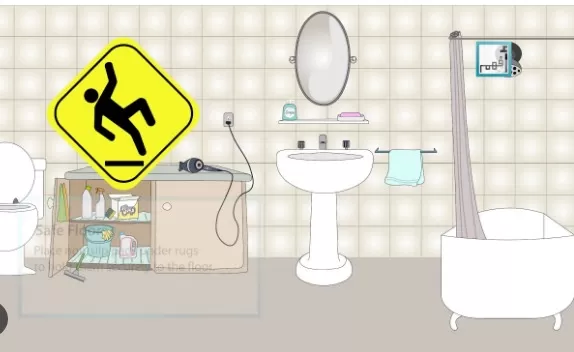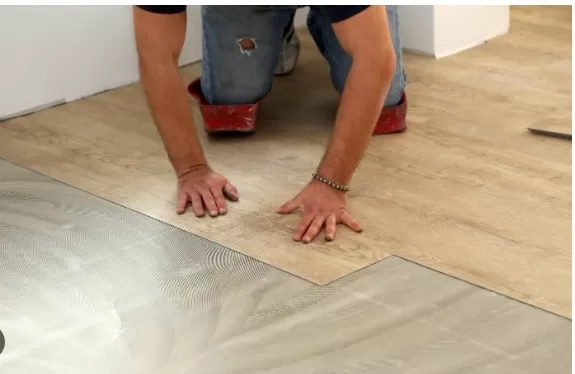Home and Health Hazards in the Bathroom: Beware and Protect. While the bathroom is often a place for relaxation and unwinding, it is important to be aware of the potential hazards that come with its plumbing, humidity, and other factors. This space, which serves essential functions, can present unexpected risks.
From slip and fall accidents to electrical hazards and water damage, it’s crucial to take precautions to ensure safety. Implementing non-slip mats, properly grounding electrical devices, and regularly inspecting and maintaining plumbing systems are essential steps in minimizing these hazards. Additionally, ensuring proper ventilation to reduce humidity and prevent the growth of mold and mildew is crucial. By being mindful of these potential risks and taking necessary preventive measures, you can maintain a safe and enjoyable bathroom environment.
Prevent Mold Growth: Effective Strategies for Bathrooms

Bathrooms, with their constant exposure to humidity, are susceptible to mold growth.
While it may be visible in the grout between tiles or along caulk lines, it can also thrive in hidden areas such as behind walls, ceilings, under floors, or inside ductwork. To prevent the buildup of mold, it’s crucial to implement proper ventilation measures.
One effective strategy is to ensure adequate airflow and moisture control in the bathroom.
Install ventilation systems such as exhaust fans that can efficiently remove excess humidity. Consider using dehumidifiers to maintain optimal humidity levels, especially in areas with poor ventilation.
Opening windows during and after showering can also facilitate air circulation and help reduce moisture buildup.
Regular maintenance is key to preventing mold growth.
Routinely inspect and clean the bathroom, paying attention to areas prone to moisture accumulation. Use mold-resistant products, such as mold-resistant caulk and grout, to inhibit mold growth in the first place.
By implementing these preventive measures and maintaining proper ventilation, you can minimize the risk of mold growth in your bathroom, ensuring a healthier and more pleasant environment.
Maintain a Safe and Clean Bathroom: Combatting Soap Scum
Soap Scum buildup not only detracts from the aesthetic appeal of your tub or shower, but it can also pose a safety hazard by creating a slippery surface.
To prevent slips and falls, especially for older individuals who may be more prone to accidents, it’s essential to address soap scum effectively.
Regular cleaning is key to keeping soap scum at bay.
Use a suitable cleaner specifically designed to remove soap scum and apply it to the affected surfaces. Scrub gently with a brush or sponge to remove the buildup.
Rinse thoroughly to ensure all residues are eliminated.
In addition to cleaning, consider implementing safety measures to reduce the risk of accidents.
Adding non-slip strips or mats to the tub or shower floor provides traction and stability while bathing. Installing grab bars in strategic locations, such as near the tub or shower area, offers extra support and helps individuals maintain balance when entering or exiting the bathing area.
By combining regular cleaning practices with safety measures, you can maintain a clean and secure bathroom environment, minimizing the risk of slips, falls, and injuries caused by soap scum buildup.
Prevent Termite Infestations: Safeguarding Against Water Damage

Water damage caused by splashing in the tub can create an attractive environment for termites, particularly on the ground floor of a house.
To prevent a termite infestation, it is essential to take proactive measures and maintain the integrity of your flooring.
Regular inspections play a crucial role in detecting any signs of termite activity.
Look for indicators such as mud tubes, discarded wings, or wood damage. If you notice any potential signs of termites, promptly contact a professional pest control service to assess the situation and take appropriate measures.
To safeguard against water damage and mitigate the risk of termite attraction, it’s important to Seal any cracks or gaps in the flooring.
Pay attention to areas where water could potentially seep through, such as around the edges of the tub or shower. By preventing water from penetrating into the structure of the house, you reduce the likelihood of creating an enticing environment for termites.
Additionally, encourage proper ventilation in the bathroom to minimize moisture buildup.
Use exhaust fans or open windows to allow excess humidity to escape, as termites are attracted to damp environments.
By conducting regular inspections, sealing cracks in the flooring, and maintaining proper ventilation, you can protect your home from termite infestations and reduce the risk of structural damage caused by these pests.
Promote Fresh Air in the Bathroom: Beware of Air Fresheners
While it’s common to use air fresheners to mask unpleasant odors in the bathroom, it’s important to be cautious about their potential negative effects.
Many air fresheners, particularly sprays, may contain volatile organic compounds (VOCs) and chemicals such as benzene and formaldehyde, which can be harmful to human health and have been associated with adverse respiratory effects and even cancer.
Instead of relying solely on air fresheners, consider alternative methods to promote fresh air in the bathroom.
Opening a window, if available, can help ventilate the space and allow fresh air to circulate, effectively reducing odors. If a window is not an option, using a bathroom fan or ventilation system can also help remove unpleasant smells and improve Air Quality.
Maintaining cleanliness and proper hygiene practices in the bathroom is vital for odor control.
Regularly clean surfaces, including the toilet, sink, and floors, to minimize the buildup of bacteria and odors. Additionally, ensuring proper ventilation and removing dampness can help prevent the development of mold and mildew, which can contribute to unpleasant smells.
By prioritizing fresh air and adopting natural ventilation methods, you can effectively manage bathroom odors without relying on potentially harmful air fresheners.
Consider Health-Friendly Flooring Alternatives: Phthalate Concerns with Vinyl Flooring

While vinyl flooring can offer a convenient and speedy upgrade, it’s important to be aware of potential health concerns associated with certain types of vinyl flooring.
Some vinyl flooring products may contain phthalates, which are volatile compounds used to enhance flexibility and durability. Phthalates can be released into the air and household dust, particularly in enclosed areas, and prolonged exposure to high levels of phthalates has been linked to asthma and allergies in children.
To prioritize the health and well-being of your household, you may want to explore alternative flooring options that minimize or eliminate the presence of phthalates.
There are various flooring materials available on the market that offer comparable durability and versatility without the potential risks associated with phthalates.
Consider eco-friendly flooring options such as natural hardwood, bamboo, cork, or linoleum.
These materials are known for their sustainability and low environmental impact. Additionally, they often do not contain harmful chemicals or emit volatile organic compounds (VOCs) that can negatively affect indoor air quality.
Before making a flooring decision, it’s advisable to research and inquire about the composition and manufacturing process of the products you are considering.
Look for flooring options that have been certified as phthalate-free or low in VOC emissions to ensure a healthier living environment for you and your family.
By opting for health-conscious flooring alternatives, you can create a safer and more comfortable home while still achieving an appealing and functional aesthetic.
*The information is for reference only.